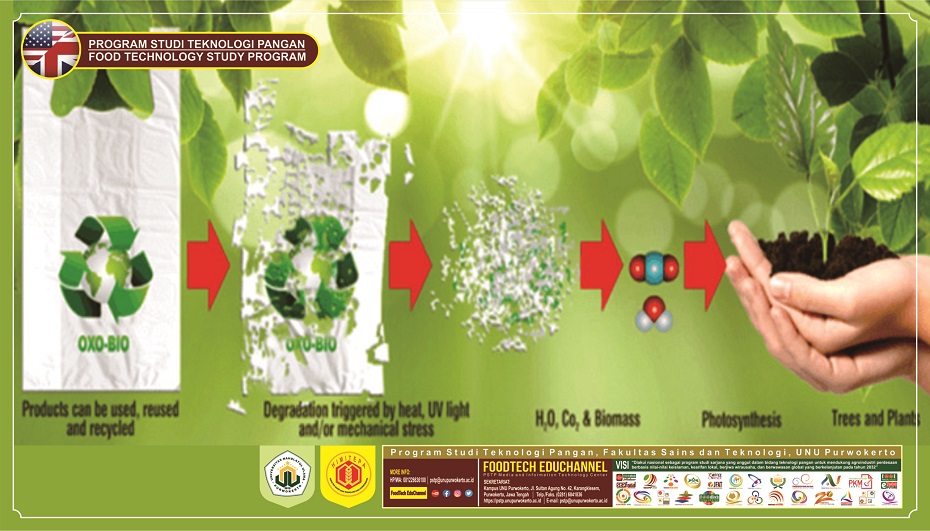e-Foodtech Future – The use of plastic packaging has become very popular in the community, starting only as a bag to various forms of derivative products. Plastic has several advantages that make it so popular, including being available in various forms, easy to use, lightweight, inexpensive, and having various important characteristics needed by food products, said Kavadya Syska, Coordinator of the Food Technology Study Program, Faculty of Science and Technology, University of Nahdlatul Ulama Purwokerto.
Today, the use of plastic has received special attention. Given this material is very difficult to decompose and will cause problems for the environment in a long time. Therefore, various innovations continue to be made -including by developing biodegradable plastics.
Currently, there are several important terms that are often discussed, namely degradable, biodegradable, and oxo biodegradable plastics. To get a better understanding, let’s review the differences between the three terms. Degradable plastic is a plastic that is designed to significantly change its chemical structure with certain processes and conditions, so that the integrity of the product is reduced. Molecules are oxidized and broken down into smaller sizes. Biodegradable plastics are plastics that can be naturally decomposed by microorganisms such as bacteria, fungi, and algae.
While oxobiodegradable is a plastic that can be broken down in two stages. The first stage is that the plastic will react with oxygen from the air and break down into small molecules that can absorb water. After that, the oxidized molecules will be decomposed by micro-organisms into CO2, H2O, and biomass.
The use of oxobiodegradable plastics is now increasingly popular in the world. There are three types of plastics, namely those that can be used as oxo-biodegradable, namely polyethylene (both HDPE and LDPE), oxo-degradable: polypropylene (PP), and polystyrene (PS). Applications may include bags (including those in direct contact with food); shrink, cling, and stretch films; bottles, containers, and trays; wrapping; straws, glasses, plates, cutlery; and others.
The increasing use of oxo biodegradable plastics is inseparable from the increasing concern for the environment. Plastic packaging that does not decompose has become a frightening specter for the world community, because it pollutes the soil, water, and air. The most visible impact is flooding due to piles of plastic in rivers or even heavy metal contamination in the open ocean due to plastic residues and their supporting materials. In addition, Table 1 also shows some advantages of using oxobiodegradable plastics.
Financially, the use of oxo biodegradable plastics is relatively cheaper than degradable packaging from cassava / sugar cane. Moreover, oxo biodegrada plastics can decompose faster in about 2-3 years.
Sumber: wawancara dan olah pustaka
Teknologi Pangan UNU Purwokerto: Kreatif, Inovatif, Luar Biasa
Teknologi Pangan UNU Purwokerto: Developing Creative and Innovative Future


Leave a Reply